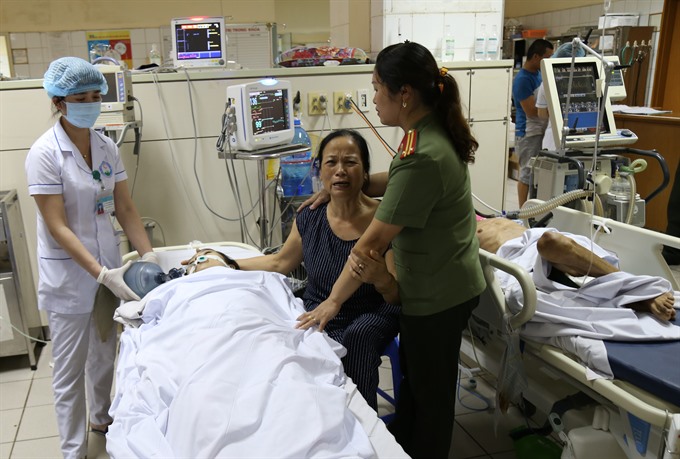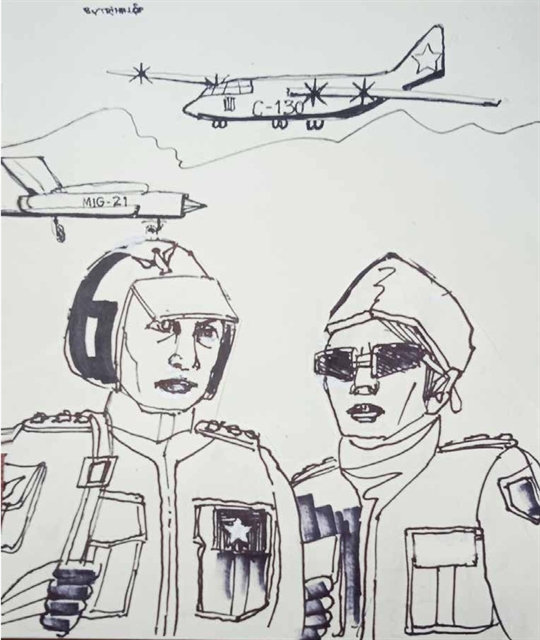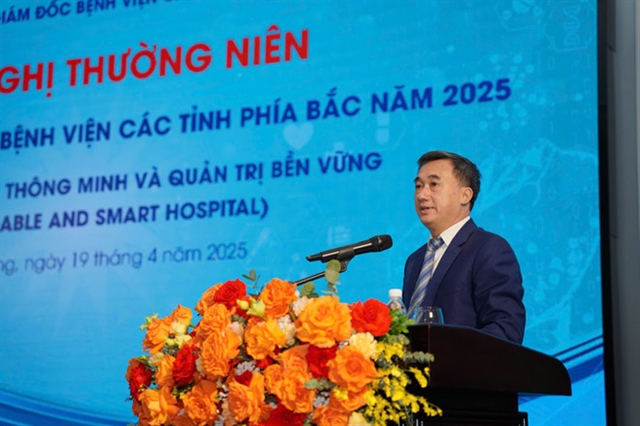

After fatal medical error, the anguish of victims and their families drags on in part because of a lack of specific regulations to determine the appropriate compensation for medical malpractice.
 |
| Doctors at Hòa Bình General Hospital take care of patients who suffered anaphylactic shocks while undergoing kidney dialysis there. Due to the lack of specified regulations on compensation for patients when medical malpractice occurs, the health sector faces difficulty in determining how to compensate victims. — VNA/VNS Photo Vũ Hà |
HÀ NỘI — After fatal medical error, the anguish of victims and their families often drags on because of a lack of specific regulations to determine the appropriate compensation for medical malpractice.
Take, for example, a recent case in the
On May 29, 18 patients underwent kidney dialysis treatment in Hòa Bình’s general hospital. Soon, they reported nausea, abdominal pain and shortness of breath.
The same day, eight patients died of suspected anaphylactic shock. The remaining 10 patients were transferred to Hà Nội’s
Tests samples revealed that the water used for kidney dialysis in the
Several meetings have been held between
"Victims’ families do not agree with the compensation rates proposed by
In the letter, the victims’ families said they were waiting for the minister to visit their families and quickly resolve the compensation matter.
According to the victims’ families, at one meeting hospital leaders promised to cover two payments, including mental compensation and assistance for family members who were under 18. The two payments will be paid by the hospital in advance while the funeral costs will be paid after an agreement is reached between the hospital and victims’ families. But negotiations have still not resolved.
Officials from the hospital said that this was the first such incident that had occurred at the hospital; consequently, they were unsure how to solve it. They said the hospital could not afford the compensation of sought by families of the victims, adding that they were waiting for written guidance from competent authorities and for the final conclusion of the investigation agency.
If they do not receive instructions, the case will be referred to the court.
The medical error at
Earlier last year, the family of Trịnh Quang Sơn, a 55 year-old HCM City businessman, asked for compensation of VNĐ23.6 billion (US$1 million) as he was left in a vegetative state after a surgery in August 2015. Sơn was diagnosed with a leak in the cavernous fistula.
After the incident, the hospital had offered a hospital fee worth VNĐ600 million ($26,400) to support Sơn’s family, but they didn’t accept the figure.
As negotiations dragged on for nine months with no result, Sơn’s family filed a lawsuit against Hồ Chí Minh City University of Medicine and Pharmacy and asked for compensation of VNĐ33 billion ($1.4 million), including hospital fees and losses to Sơn’s business caused by his ailment.
Only after Sơn died in November, more than two years after the incident, could the hospital and his family reach a compromise. The hospital would cover over VNĐ1 billion ($44,000), including the money that Sơn’s family was supposed to pay for the treatment at the hospital and an undisclosed sum as support for his family, the Tiền Phong (Vanguard) newspaper reported.
According to Deputy Minister of Health Nguyễn Viết Tiến, Việt
In July, for example, Tuyên Quang General Hospital in the northern province of Tuyên Quang agreed to pay VNĐ100 million ($4,400) to the family of a newborn who died after the hospital forced his mother to wait too long to receive a cesarean section.
In May, Na Hang General Hospital in the same province committed to pay VNĐ130 million ($5,700) for the two surviving children of a pregnant women who died during delivery, along with her unborn child. In exchange for the payment, the family agreed to withdraw a petition letter sent to the Ministry of Health, the Health Department of Tuyên Quang Province and Na Hang District Police denouncing the irresponsibility of doctors that they claimed led to the death of mother and fetus.
Currently the government only has regulations on compensating people receiving vaccines through the free national immunisation programme in case the immunisation fails or causes serious side effects.
If people die as a result of immunisations, their families will receive VNĐ10 million ($500) as compensation and funeral expenses, which is equal to 10 times the average monthly wage set by the Government [currently at VNĐ1,300,000 ($57)].
Nguyễn Trọng Khoa, deputy head of the Department of Medical Examination and Treatment under the health ministry, said there is always high risk of medical error at hospitals. The ministry is working on a draft circular to guide health facilities in responding to medical errors.
While waiting for the circular, about 20 per cent of hospitals have purchased occupational insurance for doctors as a solution to the problem, according to a recent survey. When malpractice occurs, the insurance company pays compensation to the victims’ families. — VNS









